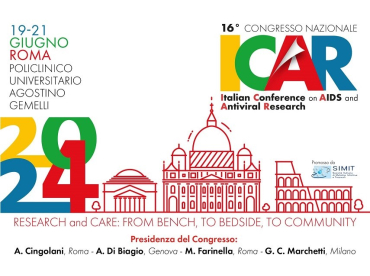Welcome to Prestigio Registry platform
Abstract from ICAR 2024 - Fri Jun 21 2024

Post-translational HIV-1 integrase modification sites might be affected by complex and prolonged treatment history associated with multidrug resistance: a proof of concept study from the PRESTIGIO registry
Background: Multiple posttranslational modifications (PTM) of HIV-1 integrase such as acetylation, phosphorylation, sumoylation and ubiquitination have been described. Variations in PTM sites might impact viral fitness but nothing is known about variability of PTM sites in vivo and their association with drug-resistance. The aim of this study was to characterize integrase PTM in heavily treatment experienced (HTE) multidrug resistant (MDR) individuals compared to individuals never exposed to antiretrovirals or to those treated but never exposed to integrase inhibitors (INI).
Material and methods: HIV-1 Integrase sequences from plasma RNA specimens of viremic HTE MDR individuals from the PRESTIGIO registry were compared to sequences from drug-experienced INI naïve and drug-naïve individuals, all harboring subtype B virus. The MusiteDeep tool (https://www.musite.net/) was used to evaluate known PTM sites for acetylation, phosphorylation, sumoylation and ubiquitination. Associations between CD4 count, viremia and integrase resistance (HIVdb ver 9.5) and the number and type of PTM sites were evaluated.
Results: 38 integrase sequences from distinct individuals were compared with 48 and 76 sequences from INI-naive and drug-naïve individuals, respectively (Table 1). PTM frequency for each group is reported in Figure 1. All acetylation sites were fully conserved in 99.4% of individuals. No significant differences in the number of phosphorylation sites were observed among the three groups. By contrast, the number of sumoylation sites was lower in HTE MDR individuals compared to those drug-naïve or INI-naïve. This was driven by a lower frequency of K136 and K244 PTM sites in HTE MDR individuals. The number of ubiquitination sites was higher in HTE MDR individuals than in other groups (P=0.043). CD4 counts and viremia levels were not significantly different according to PTM sites within treatment groups. Concerning INI resistance in HTE MDR, individuals with cross resistance to all INI showed less than three phosphorylation sites as opposed to HTE individuals with lower-level or no resistance (P=0.001, Figure 2A). The proportion of individuals with intermediate or high-level resistance to bictegravir/dolutegravir increased with increasing numbers of sumoylation sites (P=0.021, Figure 2B).
Conclusions: The number of integrase phosphorylation, sumoylation and ubiquitination sites seems to be affected by a complex and prolonged treatment history associated with multidrug resistance. The presence of high-level resistance to second generation INI seems to impact phosphorylation and sumoylation sites in integrase. Further longitudinal studies are needed to unveil the nature and implications of these correlations.


